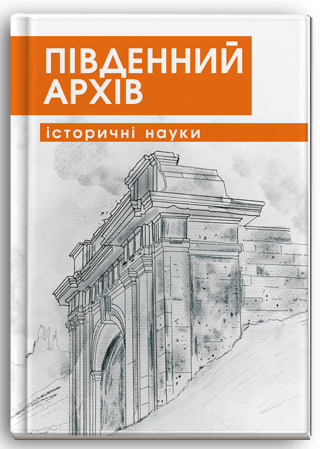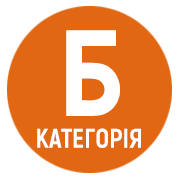FORMATION OF THE ARMED FORCES IN UKRAINE AND THE BALTIC STATES IN THE FIRST DECADE OF RESTORED INDEPENDENCE
DOI:
https://doi.org/10.32999/ksu2786-5118/2023-41-1Keywords:
servicemen, army, troops, navy, independence, security, lawAbstract
This article provides an overview of the formation of the armed forces in Ukraine and the Baltic countries during the first decade of their restoration of independence. It states that since these countries declared their independence at the end of the summer of 1991, it was necessary to form their own armies to maintain it. Considering that this the process takes quite a long time, so starting from the fall of 1991, the armed forces of these countries are undergoing formation and transformation. The purpose of the article is to analyze the process of formation of the armed forces in Ukraine and the Baltic states in the first decade of their restoration of independence. During the study of the formation of the armed forces in Ukraine and the Baltic states, the following methods were used: historical-comparative, idiographic, analysis, synthesis and dynamics. The results. This article notes that Ukraine based its new army on the former Soviet heritage, while the Baltic states abandoned this and began to form their own armed forces from a «clean sheet». However, already in the first months of independence, Russia began to promote the demilitarization of Ukraine. The Ukrainian government interacted both with NATO member countries and with the CIS countries, which did not contribute to the qualitative reform of the Armed Forces of Ukraine. The Baltic countries, in the first years of regained independence, took a course for close cooperation with NATO and later acquired membership in this Organization. If the Ukrainian leadership from the very beginning of independence paid more attention to the armed forces, then later it reduced the expenses for its maintenance in the conditions of the economic crisis. The Baltic countries, on the contrary, began to increase spending and increase their armies at the end of the 1990s. in terms of the course to NATO. The political elite of the Baltic countries was more ideologically monolithic and far-sighted than the Ukrainian one, which was also reflected in the issue of national security and the strengthening of the armed forces. Conclusions. Therefore, the process of formation of the armed forces in Ukraine and the Baltic countries was influenced by internal (maturity of the political elite, state of the economy, Soviet legacy, etc.) and external (potential risks of a new occupation, strengthening of Russia and its geopolitics towards its neighbors, NATO expansion, etc.) factors.
References
В Естонії хочуть майже вдвічі збільшити чисельність армії воєнного часу. 1 березня 2023 р. URL: https://mil.in.ua/uk/news/v-estoniyi-hochut-majzhe-vdvichi-zbilshyty-chyselnist-armiyi-voyennogo-chasu/(дата звернення: 3.03.2023).
В Таллине 25-летие вывода из Эстонии российский войск отметят салютом. 29 августа 2019 г. URL: https://rus.err.ee/974585/v-tallinne-25-letie-vyvoda-iz-jestonii-rossijskih-vojsk-otmetjat-saljutom (дата звернення: 1.03.2023).
Воєнна доктрина України. Постанова Верховної Ради України. 19.10.1993. № 3529-VII. URL: https://zakononline.com.ua/documents/show/166159___526551 (дата звернення: 5.03.2023).
Воєнна історія. Сайт Міністерства оборони України. 17 вересня 2013. URL: https://www.mil.gov.ua/ministry/istoriya.html (дата звернення: 2.03.2023).
Грицак Я. Нарис історії України. Формування модерної нації XIX–XX століття. Київ: Yakaboo Publishing, 2022. 656 с.
Завершено виведення тактичної ядерної зброї з території України. Голос України. 7 травня, 1992. № 83. URL: http://www.golos.com.ua/edition_archive/1992-05 (дата звернення: 1.03.2023).
Історія Латвії ХХ ст. / Блейере Д. та ін. Рига: «Юмава», 2005. 500 с.
Лазоркін В. Збройні сили України: 1991-2011. 6 грудня 2011. URL: https://universum.lviv.ua/journal/2011/6/lazork.htm (дата звернення: 6.03.2023).
Ландсбергис о выводе российских войск: 1 сентября было для нас первым настоящим днем свободы. 1 сентября 2022 г. URL: https://www.lrt.lt/ru/novosti/17/1770456/landsbergis-o-vyvode-rossiiskikh-voisk-1-sentiabria-bylo-dlia-nas-pervym-nastoiashchim-dnem-svobody (дата звернення: 2.03.2023).
Литва завершує свою участь в навчальній місії НАТО в Іраку. Литовський кур’єр. 2011. Вип. 52. URL: https://www.kurier.lt/litva-zavershaet-svoe-uchastie-v-obuchayu/?doing_wp_cron=1677494531.2606770992279052734375 (дата звернення: 1.03.2023).
Литва. Зарубежное военное обозрение. 1993. Вип. 2. С. 63.
Литва. Зарубежное военное обозрение. 2000. Вип. 7. С. 56.
Литвин В. Історія України : підручник. Київ : Наукова думка, 2009. 823 с.
Партнерство заради миру. Україна-НАТО. 24 грудня 2019. URL: https://ukraine-nato.mfa.gov.ua/ukrayinanato/partnerstvo-zaradi-miru (дата звернення: 5.03.2023).
Плохій С. Брама Європи: історія України від скіфських воєн до незалежності. Харків : «Клуб сімейного дозвілля», 2016. 496 с.
Постанова Верховної Ради України «Про участь батальйонів Збройних сил України в Миротворчих силах Організації Об’єднаних націй у зонах конфліктів на території колишньої Югославії» від 3 липня 1992 р. № 2538-XII. URL: https://cn.archives.gov.ua/expos/temat/UBDID/21.php (дата звернення: 3.03.2023).
Постанова Верховної Ради України від 24 серпня 1991 р. № 1431-VIII. URL: https://zakon.rada.gov.ua/laws/show/1431-12#Text (дата звернення: 4.03.2023).
Угода між сторонами про статус та умови перебування Чорноморського флоту Російської Федерації на території України від 28 травня 1997 р. URL: https://zakon.rada.gov.ua/laws/show/643_076#Text (дата звернення: 1.03.2023).
Якимович Б. Військо-морські сили України. Від відновлення до анексії Криму (1991–2014). Наукові зошити історичного факультету Львівського університету. 2016. Вип. 17. С. 350–367.



